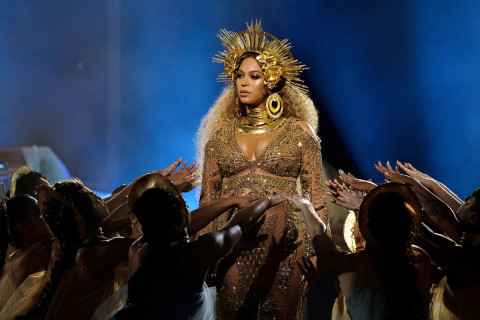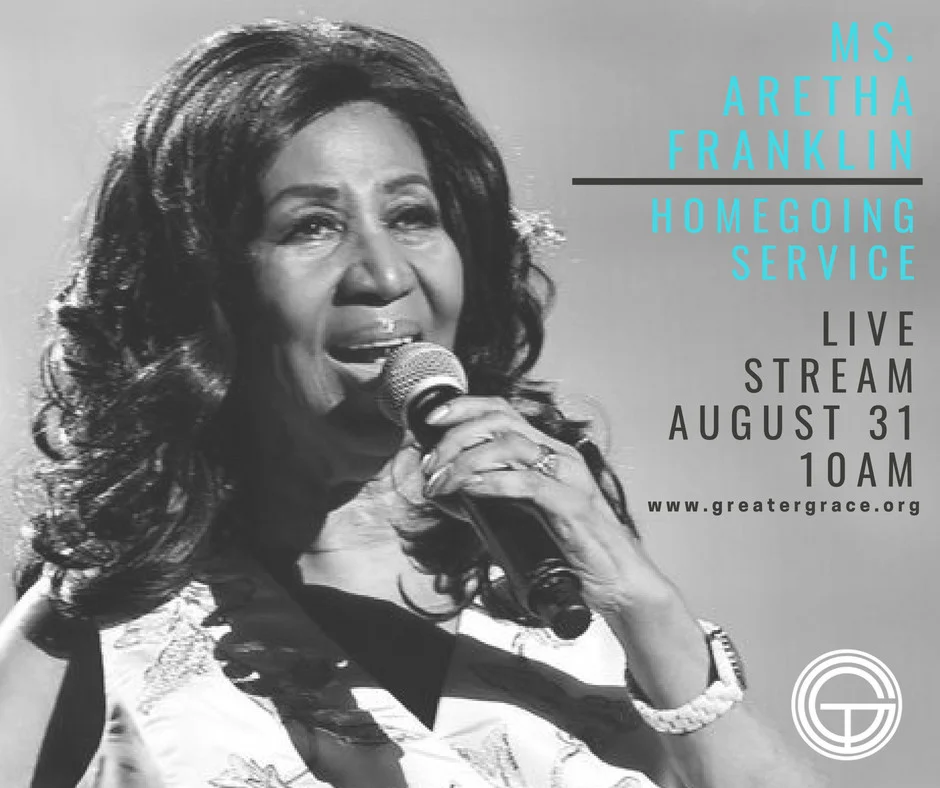Interestingly, whilst the French and German extreme right virtual communities take the shape of a “star” (in social network language) that allows for fast and efficient communication and coordination, the U.S. appears as a totally “decentralized structure” with many isolated nodes (Caiani, 2015). Yet the U.S. Alt-Right was more successful in creating a relationship between its informal/participatory politics and institutionalized politics than the French Alt-Right was. Indeed, whilst a semi-connection was made and publicly acknowledged between Trump and the U.S. Alt-Right during the 2016 U.S. Presidential campaign (although how far was the relationship “real” remains unknown), the French Alt-Right network who supposedly has efficient communication and coordination, did indeed have a strong impact on the elections, but Marine Le Pen said several times they were completely detached from her campaign and were acting of their own accord. Yet they were called Marine Le Pen’s “internet army” by journalists, the digital call to arms that came shortly in the lead up to the 2017 French presidential election (Scott, 2017). What does it mean for interaction between informal and formal politics in general? It shows that acknowledging these groups through the press, whether positively or negatively, and whether collaboration existed or not, is enough to give them power. Therefore, this puts in question the way a government and the media should deal with these groups. I will discuss further this notion of informal and formal politics in relation to ‘underground’ political groups in the next section, and whether these concepts are valid when applied to different political and cultural contexts.
6. Civic Imagination and Subcultural Knowledge
Civic imagination is the capacity to “imagine creative alternatives to current social, political, or economic institutions or problems. When we address the civic imagination, we are addressing the heart of our malleable societal norms” (Slack, 2015). The U.S. Alt-Right and the Patriots’ Tavern were the embodiment of the civic imagination. As I mentioned above, dissatisfied by the power the public media sphere held over political matters as important as the presidential election, the Alt-Right youth imagined an alternative sphere within the public sphere to design new solutions to what they thought was a social and political problem.
This example was “civic,” according to Spinoza, because it used collective imagination (Cornell and Seely, 2017). Yet I would not go as far as to call it democratic because whilst it sought to imagine better, it did not seek out the widest engagement possible with citizens, remaining highly secretive in its logistics. Nonetheless, their use of “consolidated images, symbols, stories” allowed the groups’ participants to “materialize themselves and imagine their place in the world” (Cornell and Seely, 2017) collectively and to imagine and design a new political and social future.
In the case of both the U.S. and French Alt-Rights, disrupting people’s everyday life was essential to their cause. But it had to be done with the use of authenticity and cultural acupuncture just like it was done by Andrew Slacks’ Harry Potter Alliance and Hunger Games examples. In the case of the Patriots’ Tavern, they needed to be authentically part of the gamer community to succeed just like the HPA and Hunger Games campaigns had to be authentically grounded into the fan community. It needed to speak their language and to understand all the cultural and political components embedded within that community. Thus, whilst the idea that this emerged from young gamers can make the movement seem superficial, it is not that at all. The apparent superficiality, for example, of the memes was actually a strength as colleagues at BBC would notice them but could not understand them—not because of language but because it was directed at young gamers of my brother’s generation Z. Hence, the sometimes too layered references played in their favor to create “mystery” and spread “fake news” to discredit Marine Le Pen’s political opponents.
Spreading their engagement and message beyond the community turned out to be complex. Indeed, directly sharing the content would destroy the message. Therefore, as I mentioned earlier, the communication within the group was mostly bonding social capital, creating a “shared framework of meanings" among the members of a group rather than "allowing the group to find common ground with others” (Jenkins et al., 2016). But at the same time, their ability to act as a balance in the public sphere gave a space to the government’s critics, brought together the public’s diverse opinion in one conversation that overarched the Tavern’s platform itself. This is rather similar to the observations made by Robert Darnton in his work on the low-cost press and the figure of the pamphleteer. Indeed, just like a pamphlet (a booklet or leaflet containing information or arguments about a single subject) was used in equilibrium against newspaper during the French Revolution, La Taverne acted as the modern-day pamphlet, a blog of sorts against mass media, auto proclaiming itself as the check and balance on mass media for the duration of the election, thus exploiting the general public’s distrust in media to start a ‘conversation’. And in this sense, La Taverne did bridge social capital in its strict definition, but that is a reason for us to revisit the boundaries of the term considering its importance. Indeed, whilst the Tavern should have functioned as antisocial capital because of its highly divisive message, they only functioned as such on their platform. But, outside of their platform, by creating a new alternative sphere within the public sphere, they seemed to have come close to bridging social capital in the public eye.
Their use of coded language such as memes to avoid government—and here mainstream media—was an interesting example in relation to the participatory power of the U.S. Alt-Right and the Patriots’ Tavern. Memes as coded language can surface from multiple subcultures as we saw with Mitt Romney’s presidential campaign and women’s memes on Twitter. The more memes circulate, the more media have to cover it and put it on the news agenda. And although most mainstream media did not trace back the memes or “fake news” to the platform, they reported on the numerous memes spread over Twitter through trolls and bot farms created by the Patriots’ Tavern or by the U.S. Alt-Right. To note here, the memes were not about simplifying the message. On the contrary, the memes were about using their voice and their subcultural fantasy to reach a broader range of people, and to be circulated on different media channels, whether the real meaning reached across or not.
A problem that surfaced on the platform was that Patriots’ Tavern would identify with virtual characters rather than real people. The platform’s participants would take on this new avatar identity as they dialogued to keep their identity private. It made them think about issues in sometimes nonrealistic ways (I am basing this on my observation of the platform as I was building an investigative piece for the BBC). That is an issue that has also surfaced with the Harry Potter Alliance and Nerdfighters.
Nonetheless, the U.S. Alt-Right, and more specifically the Patriots’ Tavern, succeeded in creating a space that facilitated cultural reproduction (although it is hard to judge whether the urgency came from the platform itself or from the imminent elections). Nonetheless, in the midst of this urgency, stories were not being told and this group used it to their advantage and that was almost fatal to the French democracy and tainted the U.S. democracy.
Moreover, as I mentioned above, subcultural knowledge was used here to make it harder for outsiders to read what the Patriots’ Tavern was doing on the platform itself. The Harry Potter Alliance and Nerdfighters struggled with this issue as a bug in their approach whereas it was seen as a feature from the point of view of the Patriots’ Tavern. This subcultural knowledge was part of the fantasy in this case—to be part of an underground, something hidden from public scrutiny, and the way this imagined community imagined itself. To understand why this “underground” culture worked better for the Patriots’ Tavern than the U.S. Alt-Right, I look next at the concept of “underground” politics in the French and U.S. political and cultural contexts.
France has a history of forming formal politics through informal ‘underground’ politics. In France, the context around underground politics is one of resistance during World War II, of France resisting the invader and protecting their country. To resist the German agents of the Gestapo, the French Resistance “developed codes, complex communication networks, and security structures to protect members and information” (Wilmoth Lerner, 2004). Most of these groups of resistance were formed by “political parties that the Nazi government had banned earlier” (Wilmoth Lerner, 2004). Hence, these groups were a mixture of informal and formal politics. This is very similar to the Patriots’ Tavern, although their codes are ingrained in the gaming subculture instead, as they are a mixture of young gamers but also members of small political parties and student unions (that are very politicized entities in France). Hence, that would explain why the Patriots have this fantasy of remaining ‘underground’. It gives them the same fame as the French Resistance that, some say, saved France against the German invader.
Thus, the Patriots’ Tavern are able to portray themselves as the saviors of France. The fact that they remain underground gives them a certain legitimacy. Besides, being “underground” doesn’t necessarily imply that there is no public recognition. On the contrary, the Patriots’ Tavern had their fair share of media coverage. However, by remaining obscure and hiding their activities from the public eye, they made the public curious. Hence, the French public legitimized this underground culture because historically, “underground” movements very often sparked actions that have changed France forever, most of the time for the better. Indeed, it goes further than WW2. It goes back to the creation of the French Republic after the Revolution that started in taverns, from small underground communities.
I personally think that the existing disappointment in French institutionalized politics felt by French citizens comes from the fact that our politicians are too “public”, they haven’t “earned” the right to be there because they haven’t fought a silent battle to reach the top. This is why the youth took the matter in their own hands. Indeed, it wasn’t just the Alt-Right that was hosted on gamer platform Discord, but the far-left supporters of Mélenchon and they too had a great success in their campaign. Clearly, there is a nostalgic undercurrent regarding “underground resistance”. This is also expressed by the number of student unions that plan strikes “underground” against the government, as it happened in the spring of 2018. By resisting the government by force, after silently planning their attacks, they are now able to call themselves politicians. And this blending of the formal and informal politics through the underground culture of political resistance is what truly characterize French politics and makes dealing with new movements of participatory politics so challenging and so different from the U.S. case.
On the other hand, for the U.S. the notion of “underground politics” is rather pejorative. It is a story of corruption as we are reminded of the Watergate scandal; a story of conspiracy theorists and their belief in the existence of a shadow government ruling the country, hidden from democratic institutions and scrutiny; a story of “underground” lobbyists which dictate the country’s politics and hold power over the democratically elected politicians. Hence, even when acknowledged in the public eye, and because of this notion of “underground politics”, the movement was immediately classified as negative and different from formal politics. It was almost not taken seriously, at least at first, whilst the French Alt-Right, and specifically the Patriots’ Tavern (and their underground use of gamer platforms and generally speaking cultural acupuncture) encouraged the public to admire them to some extent—just like some have admired geniuses, however evil they were, and have led them to power through that admiration alone.
The danger is that whilst the U.S. Alt-Right doesn’t have such legitimacy in the American public sphere—although it can be argued now that Trump is in power—the French version of the Alt-Right is ever more dangerous as it is “allowed” by the public to remain underground and infiltrate formal politics legitimately. Therefore, in the current unstable political environment, I believe it is essential to shed the light on this “underground politics” and the new practices of these emerging participatory politics movements.
Conclusion
Whilst these were disturbingly negative examples that, in the end, did not fully accomplish their ultimate goals, it proved that there is no such thing as so-called "slacktivism" in these countries, especially among young people. On the contrary, these youngsters showed an impressive amount of political literacy, far more than the other groups of voters. Their power of bonding was impressive, although it proved challenging to travel beyond the gamers’ community. Yet they exerted thick civic participation and an innovative use of civic media that could be used for a “good” case in participatory politics. The case of the Patriots’ Tavern was particularly interesting because it implied that you can yield results without needing to bridge social capital or be present in a physical space in the traditional sense—contrary to what Zuckerman argued was necessary to spark social movements. This in turn has strong implications for future participatory politics movements and the way formal politics should interact with informal participatory politics, specifically in France, because whilst it technically doesn’t fall in the category of bridging social capital because the Patriots’ Tavern is “underground”, the concept of “bridging social capital” just does not apply to the political context of France, specifically its ‘underground’ context; nor do the concepts of informal and formal political engagement. Therefore, this essay shows that it is essential to apply several case studies to concepts as more and more similar movements emerge in order to know how official political agents and the media should engage with these new forms of participatory politics, according to multiple cultural and political contexts. It is ever more important because it concerns young people which represent the future, and that alone cannot be ignored.
References
Baker K. (1990). ‘Public Opinion as Political Invention’ in Inventing the French Revolution. Cambridge: Cambridge University Press.
Bartlett, J. (2017). ‘From Hope to Hate: How the Early Internet Fed the Far Right’. The Guardian [online]. Available at: https://www.theguardian.com/world/2017/aug/31/far-right-alt-right-white-supremacists-rise-online
Beckett C. (2008). Chapter 2 "Is It a Bird? Is It a Plane? No! It's SuperMedia!" Networked Journalism in Supermedia. London: Blackwell.
Beckett, C. (2011). Media influence in the Networked age. Available at: http://blogs.lse.ac.uk/polis/2011/09/15/media-influence-in-the-networked-age/
Beckett, C. (2016). Fanning the flames: Reporting on terror in the networked age. Available at: http://blogs.lse.ac.uk/polis/2016/09/23/fanning-the-flames-reporting-on-terror-in-the-networked-age/
Benfield, K. (2012). ‘Why a Good Bar is Essential to Sustainable Communities’. City Lab [online]. Available at: https://www.citylab.com/design/2012/05/why-good-bar-key-sustainable-communities/2148/
Beran, D. (2017). ‘4chan: The Skeleton Key to the Rise of Trump’. Medium. Available at: https://medium.com/@DaleBeran/4chan-the-skeleton-key-to-the-rise-of-trump-624e7cb798cb
Bhabha, Homi (2004). The location of Culture. New York: Routledge.
Bilton, R. (2014). ‘WTF is GamerGate’. Digiday. Available at: https://digiday.com/marketing/wtf-gamergate/.
Brennan T. (1988). Public Drinking and Popular Culture in Eighteenth Century Paris. Princeton: Princeton Legacy Library.
Brennan, T. (2005). ‘Taverns in the Public Sphere in 18th-Century Paris’. Contemporary Drug Problems [online]. Available at: http://journals.sagepub.com/doi/pdf/10.1177/009145090503200104
Burke, K. (1939). The Rhetoric of Hitler’s “Battle”.
Caiani, M. (2015). ‘European and American Extreme Right Movements and Their Online Politics’. VoxPol [online]. Available at: http://www.voxpol.eu/european-and-american-extreme-right-movements-and-their-online-politics/
Cornell, D. and Seely, D. (2017). ‘What Has Happened to the Public Imagination an Why?’, Global-e, 10(19). Available at:
http://www.21global.ucsb.edu/global-e/march-2017/what-has-happened-public-imagination-and-why
Couldry, N. (2010). Why Voice Matters: Culture and Politics After Neoliberalism. London: Sage Publications.
Crecente, B. (2017). ‘NBC News Traces the Link Between GamerGate, Trump Supporters, Alt-Right’. Rollingsone.com. Available at: https://www.rollingstone.com/glixel/news/tracing-link-between-gamergate-trump-supporters-alt-right-w510618 .
Dahlgren, P. (2009). ‘Civic Culture: An Analytical Frame’, Media and Political Engagement: Citizens, Communication, and Democracy. Cambridge: Cambridge University Press.
Darnton R. (2000). ‘An Early Information Society: News and the Media in Eighteenth-Century Paris’. American Historical Review 105 (2000): 1-35.
Darnton R. (1995). The Forbidden Best-Sellers of Pre-Revolutionary France. New York: W.W. Norton & Company.
Deuze, M. (2003). ‘The Web and its Journalisms: Considering the Consequences of Different Types of Newsmedia Online’, New Media & Society, 5:2, pp. 203–230.
Deuze, M (2009). 'Journalism, Citizenship, and Digital Culture,' in Journalism and Citizenship: New Agendas In Communication ed Papacharissi (Routledge)
Fraser, N. (1990). 'Rethinking the Public Sphere: A Contribution to the Critique of Actually Existing Democracy'. In C. Calhoun (ed.) Habermas and the Public Sphere. Cambridge, MA: MIT Press, pp.112-142.
Gawker (2014). ‘What is GamerGate and Why an Explainer for Non-Geeks’. Gawker.com. Available at: http://gawker.com/what-is-gamergate-and-why-an-explainer-for-non-geeks-1642909080
Habermas J. (1989). Structural Transformation of the Public Sphere: An Inquiry into a Category of Bourgeois Society, Cambridge, MA: MIT Press.
Hope Not Hate (2018). ‘The Alternative Right Online’. Hope Not Hate. Available at: https://alternativeright.hopenothate.com/the-alternative-right-online
Jenkins, H., Shresthova, S., Gamber-Thompson, L., and Kliger-Vilenchik, N. (2016). ‘Superpowers to the People: How Young Activists are Tapping the Civic Imagination’, in Eric Gordon and Paul Mihailidis (eds.) Civic Media: Technology/Design/Practice. Cambridge: MIT Press.
Khasnabish, A. and Haiven, M. (2016). ‘Lessons from Social Movements: Six Notes in the
Radical Imagination’, Truthout. Available at:
http://www.truth-out.org/news/item/25411-lessons-from-social-movements-six-notes-on-the-radical-imagination
La Taverne des Patriotes (2016). Guide Patriote v2.0. Available at:
https://docs.google.com/document/d/13KObmevFceruvUovj6wa3swVTgK46_2Erdu9lyeq-UY/edit
Lees, M. (2016). ‘What Gamergate should have taught us about the ‘alt-right’. The Guardian. Available at: https://www.theguardian.com/technology/2016/dec/01/gamergate-alt-right-hate-trump.
Libération [online]. Available at: http://www.liberation.fr/politiques/2017/02/16/surveillee-par-les-journalopes-la-taverne-des-patriotes-est-devenue-un-salon-de-the_1548803McLemee, S. (2005). ‘Hitler – The Classic?’. Insidehighered [online]. Available at:
https://www.insidehighered.com/views/2005/10/06/hitler-classic
Oldenburg, R. (1997). ‘Our Vanishing “Third Places”’. Planning Commissioners Journal. Available at: http://plannersweb.com/wp-content/uploads/1997/01/184.pdf
Packer, R. (2014). ‘Third Space Place of Other’. Randall Packer [online]. Available at: http://www.randallpacker.com/third-space-place/
Pantti, M., Wahl-Jorgensen, K. and Cottle, S. (2012). Disasters and the Media. London and New York: Peter Lang.
Pepe2france (2018). Pepe2France. Available at: http://pepe2france.booru.org/index.php?page=post&s=list&pid=260
Pezet, J. (2017). ‘Surveillée par les “journalopes”, la “Tavern des Patriotes” est Devenue un Salon de Thé’. Libération [online]. Available at: http://www.liberation.fr/politiques/2017/02/16/surveillee-par-les-journalopes-la-taverne-des-patriotes-est-devenue-un-salon-de-the_1548803
Rice K. S. (1983). Early American Taverns: For the Entertainment of Friends and Strangers, New York: Regnery Gateway.
Roque, R. (2011). ‘What is Civic Media’, MIT Center for Civic Media. Available at:
https://civic.mit.edu/blog/ricarose/what-is-civic-media
Scott, M. (2017). ‘In French Elections, Alt-Right Messages and Memes Don’t Translate’. The New York Times [online]. Available at: https://www.nytimes.com/2017/05/04/technology/french-elections-alt-right-fake-news-le-pen-macron.html
Slack, A. (2015). ‘Why We Need a Civic Imagination’, Civic Hall. Available at:
https://civichall.org/civicist/why-we-need-a-civic-imagination/
Steinkuehler, C. A. and Williams, D. (2006). ‘Where Everybody Knows Your (Screen) Name: Online Games as “Third Places”. Available at: https://academic.oup.com/jcmc/article/11/4/885/4617703
Vas, G. (2013). ‘The Most Comfortable Inns, Bars and Taverns In Video Games’. Kotaku [online]. Available at: https://kotaku.com/5991282/the-most-comfortable-inns-bars-and-taverns-in-video-games
Wahl-Jorgensen, K. (2016). ‘Emotion and journalism’. In: Witschge, T. et al. eds. The SAGE Handbook of Digital Journalism. SAGE Publications, pp. 128-143.
Wilmoth Lerner, A. (2004). ‘French Underground During World War II, Communication and Codes’. Encyclopedia of Espionage, Intelligence, and Security [online]. Available at: https://www.encyclopedia.com/politics/encyclopedias-almanacs-transcripts-and-maps/french-underground-during-world-war-ii-communication-and-codes
Wilson, J. (2017). ‘Hiding in Plain Sight: How the ‘Alt-Right’ is weaponizing irony to spread fascism’. The Guardian. Available at:
https://www.theguardian.com/technology/2017/may/23/alt-right-online-humor-as-a-weapon-facism
Zuckerman, E. (2015). ‘Cute Cats’ in Danielle Allen (ed.) From Voice to Influence: Understanding Citizenship in the Digital Age. Chicago: University of Chicago Press.
Zuckerman, E. (2016). ‘Effective civics’ in Eric Gordon and Paul Mihailidis (eds.) Civic Media: Technology/Design/Practice. Cambridge: MIT Press.















































